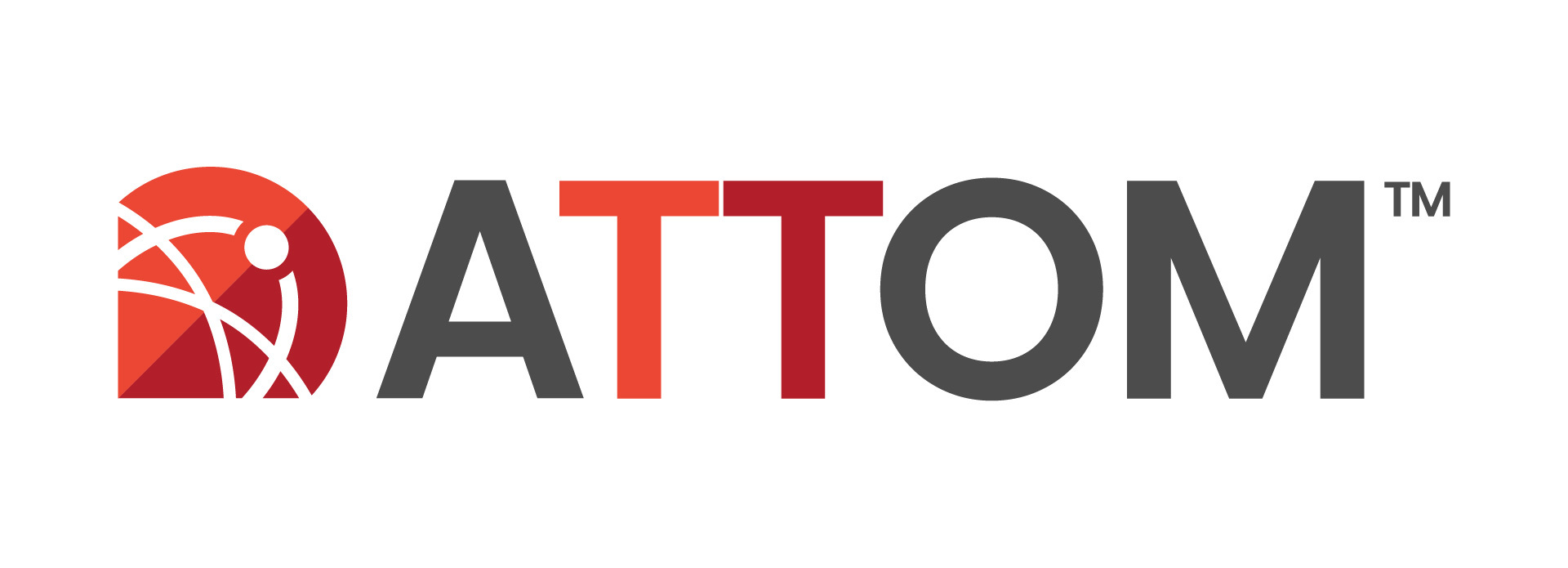Home-Ownership Expenses Consume Smaller Portion of Wages Than Three-Bedroom Rents in Majority of Local Markets; Owning Still More Favorable Despite omeHomHomHome Prices Rising Faster Than Rents; Both Options Remain a Financial Stretch for Average Workers Around Nation
IRVINE, Calif., Feb. 6, 2025 -- ATTOM, a leading curator of land, property data, and real estate analytics, today released its 2025 Rental Affordability Report, which shows that owning a home in the United States is more affordable than renting a three-bedroom property in more than half of county-level markets around the nation.
The report shows that both owning and renting remain difficult for average U.S. workers, commonly consuming 25 to 60 percent their wages. But major ownership expenses on typical single-family homes nevertheless require a smaller portion of average wages than renting three-bedroom residences in close to 60 percent of the 341 county-level markets with enough data to analyze.
Owning is the more affordable choice - for those who can manage a down payment - despite median home prices generally rising faster over the past year than average rents around the country.
The analysis for this report incorporated data compiled by ATTOM on average rents, as well as median home prices from public-record sales deeds in counties with sufficient single-family home sales data. Those two data sources were combined with average wage figures from the Bureau of Labor Statistics (see full methodology below).
"Buying or renting a home in the U.S. these days can be like searching for a diamond in a pile of marbles, and it's only getting worse in most markets as the cost of both goes up," said Rob Barber, CEO at ATTOM. "However, in most parts of the country, homeownership is somewhat more attainable for those who can gather the necessary resources to cover down payments that often surpass $200,000."
He added that "the current situation is tenuous, especially if mortgage rates keep going back up like they have in the past couple of months. But for now, homeownership is the more viable choice."
Changes in home prices outpacing rental trends in majority of U.S.
Median prices for single-family homes have increased more over the past year, or declined less than average three-bedroom rents in 225, or 66 percent, of the 341 counties analyzed in this report. Counties were included in the report if they had a population of 100,000 or more, and sufficient single-family home sales in 2025 along with sufficient data showing changes in three-bedroom rents from 2024 to 2025.
The most populous counties where median home prices have risen faster or declined less than average three-bedroom rent over the past year are Los Angeles County, CA; Cook County (Chicago), IL; Maricopa County (Phoenix), AZ; San Diego County, CA, and Orange County, CA.
The largest among the 116 counties in the report (34 precent) where changes in average three-bedroom rents have outpaced shifts in median prices are Harris County (Houston), TX; Tarrant County (Fort Worth), TX; Bexar County (San Antonio), TX; Suffolk County, NY (outside New York City) and Franklin County (Columbus), OH.
Home ownership generally more affordable amid regional disparities
Significant differences in the affordability of owning versus renting exist among various regions of the country, with buying a residence most favorable in the Midwest and South, followed by the Northeast.
In about 80 percent of counties analyzed across the Midwest and 60 percent in the South, owning requires smaller portions of average wages. The same is true in about half in the Northeast.
The West, meanwhile, stands out as the one region that bucks the trend. In that part of the U.S., rentals are the financially easier choice. Renting is the better option in about 80 percent of western markets.
Among the 341 counties reviewed, the biggest affordability gaps in favor of home ownership are in Suffolk County, NY (outside New York City) (major home-ownership expenses on typical homes purchased in 2024 consume 59 percent of average local wages while average three-bedroom rents require 159 percent); Atlantic County (Atlantic City), NJ (48 percent for owning versus 111 percent or renting); Collier County (Naples), FL (79 percent versus 127 percent); Indian River County (Vero Beach), FL (47 percent versus 83 percent) and Charlotte County (Punta Gorda), FL (43 percent versus 69 percent).
Aside from Suffolk County, the largest gaps in counties with a population of at least 1 million are in Riverside County, CA (71 percent versus 91 percent); Wayne County (Detroit), MI (15 percent versus 22 percent); Cook County (Chicago), IL (31 percent versus 36 percent) and Allegheny County (Pittsburgh), PA (21 percent versus 25 percent).
The largest differences in favor of renting are in Alameda County (Oakland), CA (average three-bedroom rents require 48 percent of average local wages while major home-ownership expenses on typical homes purchased in 2024 require 87 percent); Honolulu County, HI (64 percent for renting versus 103 percent for owning); San Mateo County, CA (31 percent versus 69 percent); San Clara County (San Jose), CA (27 percent versus 64 percent) and Loudoun County, VA (outside Washington, DC) (45 percent versus 81 percent).
Ownership stresses household budgets but remains far more affordable in the Midwest
The report shows that major home ownership expenses require more than one-third of the average local wage in 231 of the 341 counties analyzed for the report (68 percent). But that pattern also varies widely around the nation. Only about a quarter of midwestern counties, which have some of the lowest home prices in the U.S., fall into that category. In other regions, more than one-third of averages wages is needed in 66 to 98 percent of county-level markets.
The most affordable local markets for ownership (assuming a 20 percent down payment on a home purchase) are Jefferson County (Birmingham), AL (15 percent of average local wages needed for major ownership expenses on homes bought last year); Wayne County (Detroit), MI (15 percent); Peoria County, IL (15 percent); Montgomery County, AL (16 percent) and Mobile County, AL (17 percent).
Aside from Wayne County, the most affordable counties for owning among those with a population of at least 1 million are Allegheny County (Pittsburgh), PA (21 percent needed to own); Cuyahoga County (Cleveland), OH (21 percent); Harris County (Houston), TX (26 percent) and Philadelphia County, PA (28 percent).
The least affordable counties for owning are led by Orange County, CA (outside Los Angeles) (110 percent of average local wages needed to own); Kings County (Brooklyn), NY (106 percent); Honolulu County, FL (103 percent); San Luis Obispo County, CA (100 percent) and Monterey County, CA (99 percent).
Most-affordable rental markets also in Midwest
The report shows that average three-bedroom rents require more than one-third of average local wages in 260 of the 341 counties analyzed for the report (76 percent). But the Midwest again has by far the largest portion of more-affordable areas, with a majority of markets in that region falling below the one-third benchmark.
The most affordable markets for renting are Black Hawk County (Waterloo), IA (20 percent of average local wages needed for average three-bedroom rents); Wayne County (Detroit), MI (22 percent; Genesee County (Flint), MI (23 percent); Jefferson County (Birmingham), AL (23 percent) and Hinds County (Jackson), MS (23 percent).
Aside from Wayne County, the most affordable for renting among counties with a population of at least 1 million are Cuyahoga County (Cleveland), OH (25 percent of average local wages needed to rent); Allegheny County (Pittsburgh), PA (25 percent); Philadelphia County (PA) (27 percent) and Santa Clara County (San Jose), CA (27 percent).
The least affordable markets for renting among those analyzed are Suffolk County, NY (outside New York City) (159 percent of average local wages needed to rent); Collier County (Naples), FL (127 percent); Atlantic County (Atlantic City), NJ (111 percent); Santa Barbara County, CA (107 percent) and Riverside County, CA (91 percent).
Aside from Riverside and Suffolk counties, the least-affordable counties among those with a population of 1 million or more are Orange County, CA (outside Los Angeles) (80 percent of average local wages needed to rent); Los Angeles County, CA (72 percent) and Kings County (Brooklyn), NY (71 percent).
Wages growing faster than rents in nearly three-quarters of local markets
Average wages are increasing more or declining less than average three-bedroom rents in 245 of the 341 counties analyzed in the report (72 percent). They include Los Angeles County, CA; Cook County (Chicago), IL; Harris County (Houston), TX; Maricopa County (Phoenix), AZ, and San Diego County, CA.
Average rents are growing faster than average wages in 96 of the counties in the report (28 percent), including Suffolk County, NY (outside New York City); Franklin County (Columbus), OH; Oakland County, MI (outside Detroit); Hennepin County (Minneapolis), MN, and Cuyahoga County (Cleveland), OH.
Home prices increasing more than wages in half of nation
Median home prices are going up more or declining less than average wages in 177 of the 341 counties in the report (52 percent). They include Los Angeles County, CA; Cook County (Chicago), IL; San Diego County, CA; Orange County, CA (outside Los Angeles) and Miami-Dade County, FL.
Weekly wages are rising faster than median home prices in 164 of the counties analyzed in the report (48 percent), including Harris County (Houston), TX; Maricopa County (Phoenix), AZ; Dallas County, TX; Clark County (Las Vegas), NV, and King County (Seattle), WA.
Methodology
For this report, ATTOM looked at average three-bedroom rents in 2024 and 2025 along with second-quarter 2024 average weekly wage data from the Bureau of Labor Statistics (the most recent data available) and 2024 single-family home price data from ATTOM's publicly recorded sales deed data in 341 counties nationwide.
Rental affordability represents the average fair market rent for a three-bedroom property as a percentage of the average monthly wage (based on average weekly wages). Home-buying affordability represents the monthly house payment for a median-priced home (including mortgage, based on a 20 percent down payment, plus property tax, homeowner's insurance and private mortgage insurance) as a percentage of the average monthly wage.
About ATTOM
ATTOM provides premium property data and analytics that power a myriad of solutions that improve transparency, innovation, digitization and efficiency in a data-driven economy. ATTOM multi-sources property tax, deed, mortgage, foreclosure, environmental risk, natural hazard, and neighborhood data for more than 155 million U.S. residential and commercial properties covering 99 percent of the nation's population. A rigorous data management process involving more than 20 steps validates, standardizes, and enhances the real estate data collected by ATTOM, assigning each property record with a persistent, unique ID — the ATTOM ID. The 30TB ATTOM Data Warehouse fuels innovation in many industries including mortgage, real estate, insurance, marketing, government and more through flexible data delivery solutions that include ATTOM Cloud, bulk file licenses, property data APIs, real estate market trends, property navigator and more. Also, introducing our newest innovative solution, making property data more readily accessible and optimized for AI applications – AI-Ready Solutions.
This News is brought to you by Qube Mark, your trusted source for the latest updates and insights in marketing technology. Stay tuned for more groundbreaking innovations in the world of technology.









